Why Your Medications Expire Sooner Than They Should
You bought that prescription with the best intentions. But now it’s sitting in your bathroom cabinet, and the expiration date is already past. You’re not alone. Nearly 37% of households in the U.S. end up throwing away pills, creams, or liquids before they should - not because they’re useless, but because they were stored wrong. Humidity, heat, and light are silent killers of medicine. And most people have no idea how much damage they’re doing.
The FDA says expiration dates aren’t just guesses. They’re based on real testing that shows when a drug drops below 90-110% of its labeled strength. If you store insulin in a hot kitchen or keep aspirin in a steamy bathroom, it breaks down faster. You’re not saving money - you’re risking your health. And it’s not just about potency. Degraded meds can turn toxic. Aspirin that smells like vinegar? That’s acetylsalicylic acid turning into acetic acid. Eye drops left on the counter? They can grow dangerous bacteria like Pseudomonas aeruginosa.
Where NOT to Store Your Medications
The bathroom medicine cabinet is the worst place for almost every kind of pill. Why? Showers spike humidity to 85-95%. That’s enough to make tablets crumble, capsules stick together, and liquids grow mold. A 2023 UCHealth study found that aspirin breaks down 300% faster in that kind of moisture.
The kitchen is almost as bad. Near the stove, oven, or even the coffee maker, temperatures swing wildly. One study showed that common antibiotics lost 42% of their strength in just 90 days when stored near heat sources. Even the top of the fridge - where people think it’s cool - gets warm from the compressor. And don’t store meds in your car. Summer temps inside a parked car can hit 140°F. That’s enough to melt capsules and ruin liquid suspensions.
Drawer storage? Only if it’s not in a humid room. A dresser drawer in a bedroom is better than a bathroom cabinet - but only if it’s away from direct sunlight and doesn’t get too hot in summer. The goal is stable, cool, and dry.
Where You SHOULD Store Medications
The best spot? A cool, dry place with consistent temperature - like a bedroom closet or a locked cabinet in a central room. The ideal range is 68-77°F (20-25°C) with humidity under 60%. You don’t need fancy gear. A simple digital hygrometer (under $15 online) will tell you if your storage area is safe. If humidity climbs above 60%, add a silica gel packet or two. They’re cheap and reusable.
For medications that need refrigeration - like insulin, certain antibiotics, or eye drops - store them in the center of the fridge, not the door. Door shelves bounce between 35-48°F. The center stays steady at 37-40°F. Keep them in their original bottles. That amber glass blocks 97% of UV light, which degrades many drugs. Don’t transfer pills to pill organizers unless you’re using them daily. Long-term storage? Always keep the original container.
Special Cases: Insulin, Nitroglycerin, and Other Sensitive Drugs
Not all meds are created equal. Some need extra care.
- Insulin: Unopened bottles must stay refrigerated at 36-46°F. Once opened, most can be kept at room temperature (up to 86°F) for 28 days. Never freeze it. Frozen insulin is useless.
- Nitroglycerin: These tiny tablets for chest pain are extremely sensitive. Keep them in the original dark glass bottle. Tighten the cap after each use. Exposure to air or light can make them lose effectiveness in days.
- Eye drops and liquid antibiotics: Once opened, most last only 28 days - even if the bottle says otherwise. Discard after that. Contaminated drops can cause serious eye infections.
- Suppositories and creams: Heat melts them. Store in the fridge if the label says so. If they look oily, runny, or smell off, throw them out.
Always read the label. Manufacturers now include storage icons - a snowflake for refrigeration, a sun with a line through it for avoiding light. These aren’t just suggestions. They’re requirements.
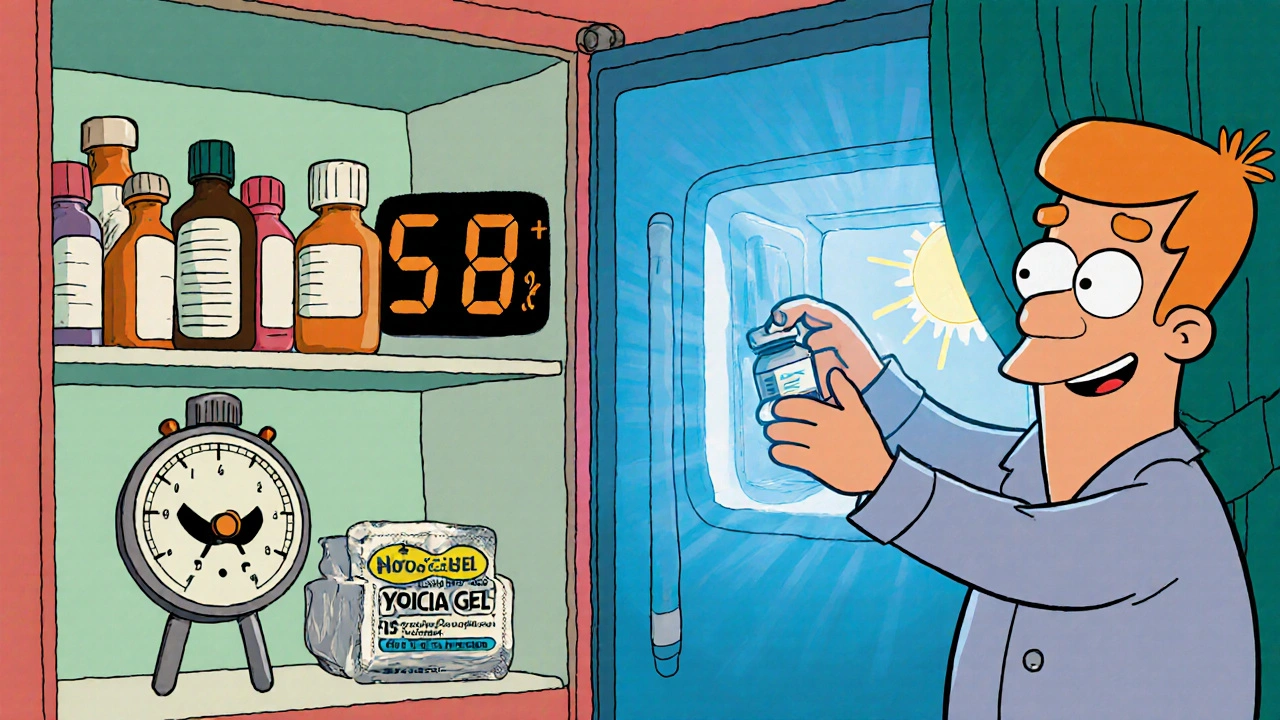
How to Spot When a Medication Has Gone Bad
You don’t need a lab to tell if your meds are still good. Look for these signs:
- Change in color: If a white tablet has yellowed or browned by more than 15%, it’s degraded.
- Odd smell: Aspirin that smells like vinegar? Gone. Liquid meds with a sour or chemical odor? Discard.
- Texture changes: Tablets that crumble, capsules that stick together, or powders that clump? Not safe.
- Particles in liquids: If you see floating specks or cloudiness in eye drops, syrups, or injectables - toss them.
- Expiration date passed: Even if it looks fine, don’t use it. The FDA’s Shelf Life Extension Program found some military meds stayed potent for years - but only when stored in perfect, climate-controlled warehouses. Your house isn’t one.
If you’re unsure, call your pharmacist. They’ll tell you if it’s risky. Better safe than sorry.
Organize and Track: Stop Wasting Money
One of the biggest reasons meds expire early? No one checks them. A Kaiser Permanente study found that assigning one person in the household to do a monthly check reduces premature disposal by 89%.
Try this simple system:
- Take out every bottle, pill, and liquid.
- Check expiration dates. Write the date on a sticky note if it’s hard to read.
- Group them by expiration: current year (red), next year (blue), two years out (green).
- Discard anything expired or suspicious.
- Put everything back in one cool, dry spot.
Some pharmacies offer free expiration tracking apps. Others send email reminders. Ask yours. The University of Wisconsin’s color-coding system, tested in a 2021 trial, cut expired meds by 63%. You don’t need tech - just a habit.
What to Do With Expired or Unused Medications
Never flush pills down the toilet. That pollutes water supplies. Never throw them in the trash where kids or pets might find them. The safest way? Use a drug take-back program.
The DEA runs National Prescription Drug Take Back Day twice a year. In 2024, there were over 11,105 collection sites across the U.S. - pharmacies, police stations, hospitals. Find one near you at dea.gov/takebackday. Many pharmacies also have permanent drop boxes.
If no take-back option exists, mix pills with coffee grounds or cat litter in a sealed bag before tossing. It makes them unappealing and unusable. But take-back is always better.
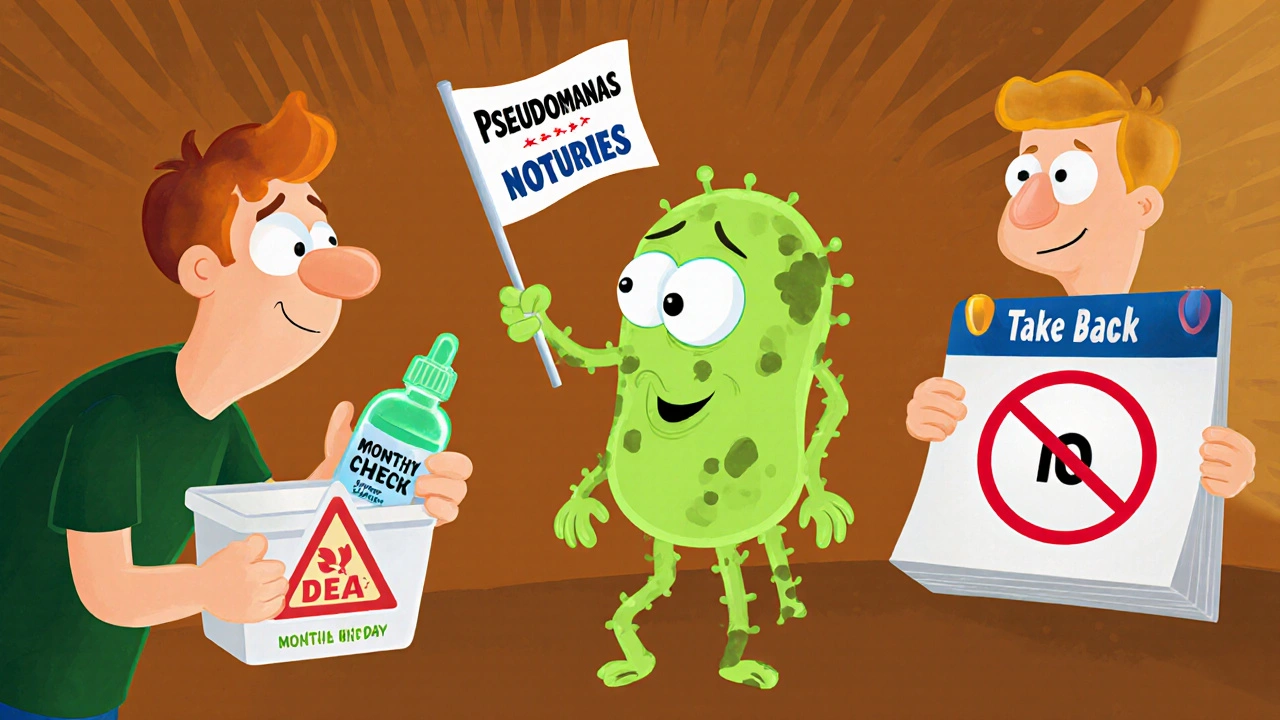
What’s Changing in Medication Storage
Technology is catching up. New smart pillboxes like MedMinder Pro track temperature and humidity in real time. Merck’s new heat-stable insulin can last 56 days at 86°F - a game-changer for people without reliable refrigeration. And starting in 2025, the FDA plans to require real-time stability indicators on high-risk meds - think color-changing labels that show if the drug’s been exposed to bad conditions.
Meanwhile, research is testing prescription bottles with built-in silica gel to keep humidity 45% lower than normal. These won’t be mainstream for a few years, but they show where things are headed.
Right now, the biggest gap isn’t tech - it’s awareness. A 2024 JAMA study found that 63.7% of rural households lack climate-controlled storage. That means meds degrade 41% faster than in cities. Education saves lives - and money. The American Pharmacists Association’s "Store It Safe" campaign has already helped 1.2 million households. You can be next.
Final Tip: When in Doubt, Throw It Out
Medications aren’t like milk. You can’t smell them and guess. If you’re not 100% sure it’s safe - don’t risk it. Taking a degraded antibiotic could mean your infection doesn’t clear. Taking weak heart medicine could be deadly. You paid for it. You trusted it. Don’t let poor storage make it useless.
Proper storage isn’t about being perfect. It’s about being consistent. Cool. Dry. Out of the sun. In the right container. And checked regularly. Do that, and you’ll keep your meds effective - and save thousands in wasted prescriptions every year.
Can I still use medicine after the expiration date?
The expiration date is the last day the manufacturer guarantees full potency and safety. While some medications may still work after that date - especially if stored perfectly - most don’t. In household conditions, heat, moisture, and light break down drugs faster. Using expired meds can mean ineffective treatment or even harm. When in doubt, throw it out.
Is it safe to store pills in a pill organizer long-term?
No. Pill organizers are meant for daily use, not storage. Once you remove pills from their original bottles, they’re exposed to air, light, and humidity. This speeds up degradation. Also, many organizers aren’t child-resistant. Keep your meds in their original containers unless you’re taking them that day.
What if my medicine looks fine but expired?
Appearance doesn’t guarantee safety. A tablet might look unchanged but have lost 30% of its strength. Liquid meds can grow bacteria without visible cloudiness. Expired insulin could fail to control blood sugar. Never assume it’s safe just because it looks okay. Always follow the expiration date.
How do I know if my bathroom is too humid for meds?
Buy a digital hygrometer - they cost less than $15. Hang it in your bathroom for 24 hours. If humidity stays above 60%, that’s too high. Showers spike it to 85-95%. Even if it drops later, repeated exposure damages meds. Move them to a bedroom or closet.
Can I refrigerate all my medications?
No. Only refrigerate what the label says. Many pills and capsules can become brittle or break down in cold temperatures. Refrigeration isn’t always better - it’s only necessary for specific drugs like insulin, certain eye drops, or liquid antibiotics. Always check the manufacturer’s instructions.
Next Steps
Do this today: Find all your medications. Check their expiration dates. Look at where they’re stored. If they’re in the bathroom or kitchen, move them. Buy a $15 hygrometer. Set a calendar reminder for monthly checks. You’ll save money, avoid health risks, and make sure your meds work when you need them.

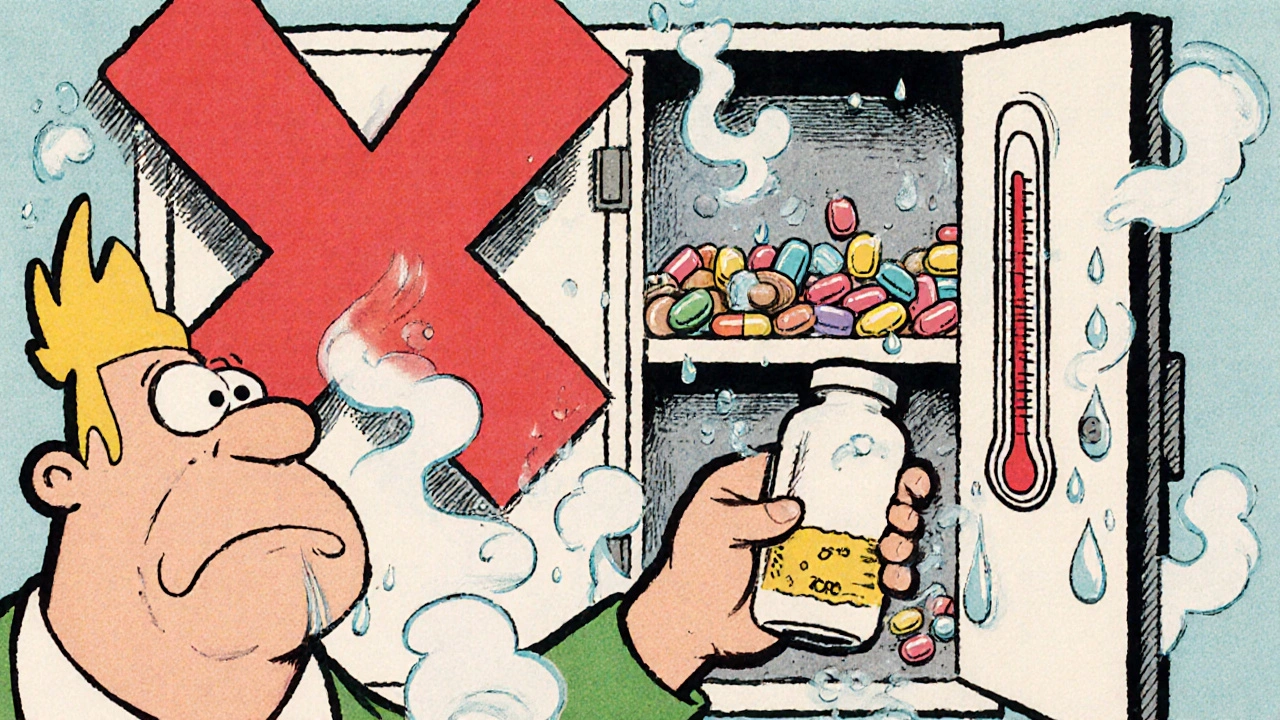
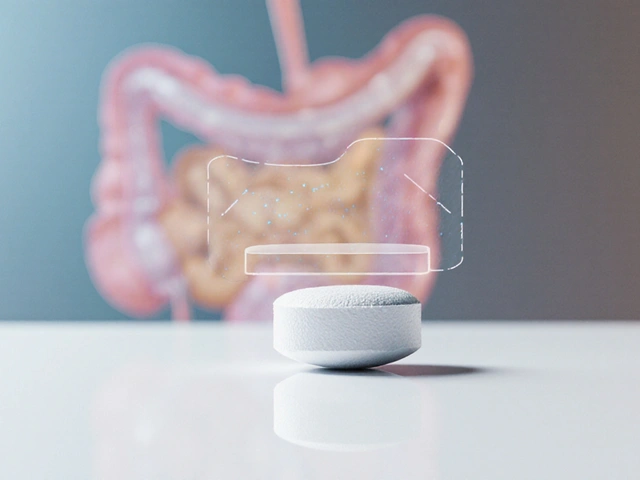

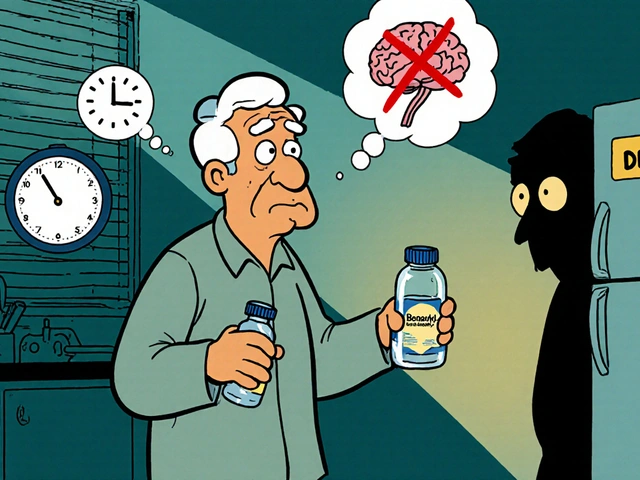

Katelyn Sykes
November 19, 2025 AT 04:51Also never store anything near the coffee maker. That thing is a mini oven.
Gabe Solack
November 20, 2025 AT 08:06steffi walsh
November 20, 2025 AT 21:47Gabriella Jayne Bosticco
November 21, 2025 AT 02:17Conor McNamara
November 21, 2025 AT 20:18Leilani O'Neill
November 23, 2025 AT 06:06Riohlo (Or Rio) Marie
November 24, 2025 AT 02:38Sarah Frey
November 25, 2025 AT 06:43Yash Nair
November 27, 2025 AT 05:41Girish Pai
November 28, 2025 AT 23:08Hal Nicholas
November 29, 2025 AT 13:25Bailey Sheppard
November 30, 2025 AT 00:53Kristi Joy
December 1, 2025 AT 08:13